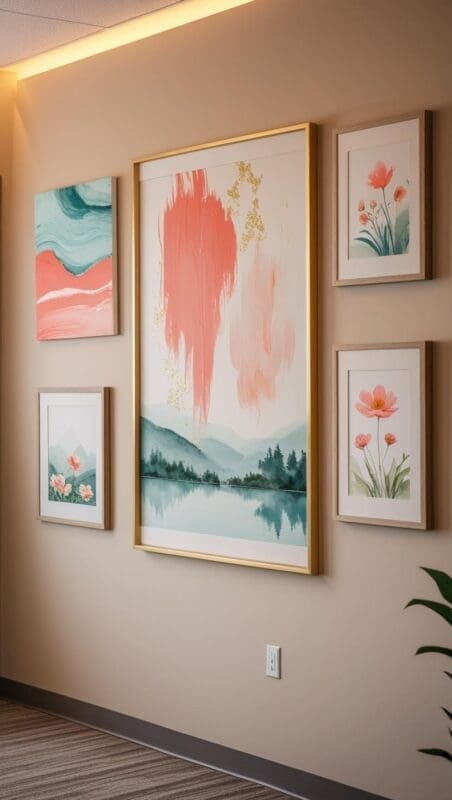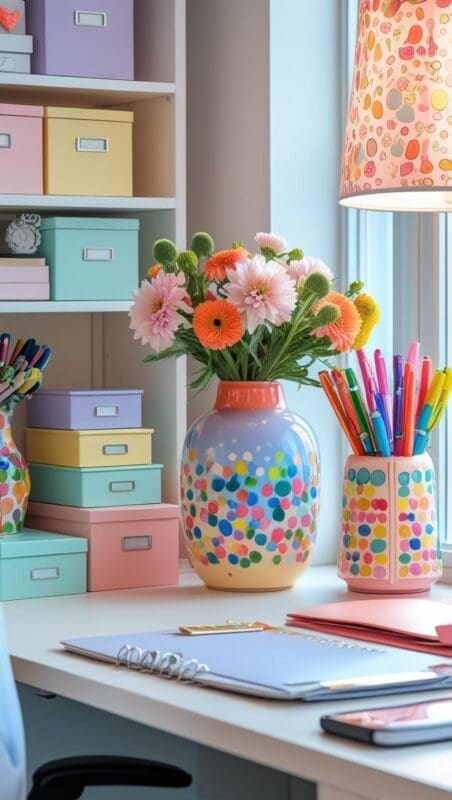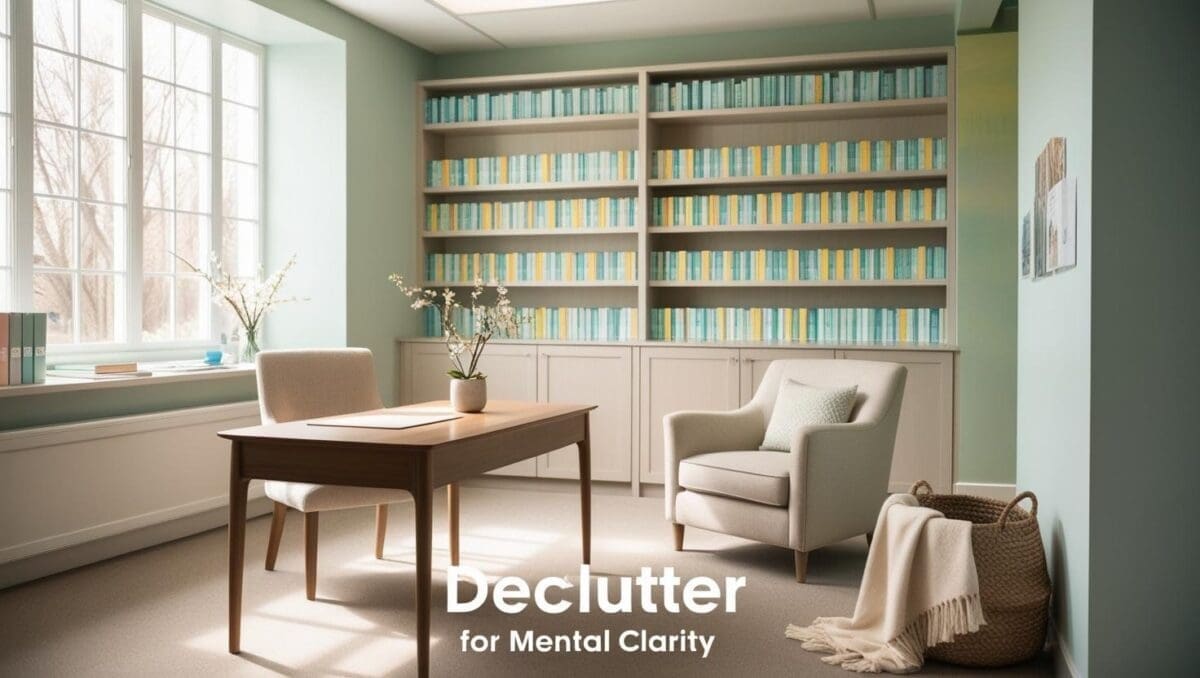Bringing Joy Into the Healing Space
Therapy offices have a unique role: they need to feel safe, professional, and calming, but also warm enough to invite conversation and connection. For years, many therapists leaned toward muted neutrals—beige walls, grey furniture, soft white lighting—because they were seen as “safe” and unobtrusive.
But what if safe could also be uplifting? That’s where Dopamine Decor comes in. Inspired by the idea that our surroundings can boost mood and energy, dopamine decor blends bright, happy colors with textures and shapes that bring joy at first glance. It’s not about being loud or chaotic—it’s about creating a space that sparks positivity without overwhelming the senses.
For therapists, counselors, and wellness practitioners, dopamine decor can be a powerful tool for setting the emotional tone in the room. Below, you’ll find practical ways to bring this trend into your office in a way that enhances mental health, supports your clients, and stays true to your professional style.
1) What Is Dopamine Decor in a Therapy Context?
Dopamine Decor is rooted in the idea that color, pattern, and playful design elements can trigger a release of dopamine—a neurotransmitter linked to pleasure and motivation. In a therapy setting, these elements can help create an environment that encourages openness, reduces anxiety, and sparks hope.
- Vibrant color pops paired with balanced neutrals.
- Playful textures that invite touch—bouclé, velvet, knitted throws.
- Whimsical or joyful details that evoke positive associations (artwork, patterns, unique lighting).
- Personal touches that tell a story and feel authentic.
Why it matters: Exposure to specific colors like sunny yellows, sky blues, and nature-inspired greens is associated with elevated mood and stress relief. Thoughtful use of these elements can gently influence the emotional energy in the room.
2) Choose a Balanced Color Palette
In therapy offices, dopamine decor isn’t about painting every wall hot pink. Instead, focus on strategic color moments.
- Anchor with a neutral base—soft beige, creamy white, or warm grey helps bright colors shine without overwhelming the senses.
- Pick 2–3 accent colors that feel joyful but not overstimulating—think coral, mustard yellow, aqua, or lavender.
- Rotate seasonally—deeper tones in autumn (burnt orange, olive green) and lighter pastels in spring keep the office feeling fresh.
Therapist tip: For highly sensitive clients, keep saturated colors in smaller accents—pillows, wall art, or rugs—so visual interest stays comforting rather than stimulating.
3) Layer Joyful, Grounding Textures
Texture can be as powerful as color in setting an emotional tone. Smooth, soft, and tactile surfaces invite grounding touch, which can be calming during emotionally charged sessions.
- Bouclé armchairs for a cozy but modern feel.
- Chunky knit throws in cheerful colors for warmth and comfort.
- Velvet cushions in jewel tones for a subtle touch of luxury.
- Natural fibers like jute rugs for a grounding, earthy vibe.
Mental health insight: Tactile experiences can support nervous system regulation. A client holding a soft pillow or wrapping a throw can find it easier to stay present and feel safe.
4) Use Art as an Emotional Anchor
Art in dopamine decor goes beyond pretty pictures—it’s about choosing imagery that sparks a positive emotional response.
- Abstract pieces in your accent colors to energize the space without dictating mood.
- Nature photography with bright but soothing tones—sunlit forests, wildflower fields, coastal scenes.
- Whimsical illustrations that subtly invite playfulness (especially helpful in child therapy rooms).
Placement matters: Hang art where clients will naturally see it when they enter or where their gaze may wander during reflection. Avoid busy visuals directly behind your seating area to minimize distraction.
5) Add Playful Yet Professional Accessories
Accessories are where you can fully embrace dopamine decor without committing to permanent changes.
- Colorful ceramic vases for fresh flowers or greenery.
- Patterned lampshades that bring in subtle color.
- Discreet desk accessories like a rainbow pen holder or pastel storage boxes.
- Statement throw pillows that double as comfort objects.
Small, interchangeable pieces make it easy to refresh your space seasonally or as your mood shifts, keeping the environment dynamic without feeling chaotic.
6) Light for Warmth and Mood
Lighting can make or break the dopamine effect. Harsh fluorescents can clash with bright colors, while warm, layered lighting makes them glow.
- Use warm white bulbs (2700K–3000K) to make colors feel richer.
- Incorporate multiple light sources—a mix of overhead, floor, and table lamps.
- Try colored lamp bases or shades for a gentle hint of dopamine color.
Bonus: Cordless and rechargeable lamps are perfect for offices with limited outlets or awkward layouts—you can move them to create cozy, light-filled nooks.
7) Bring in Plants for Freshness & Energy
Plants are a natural complement to dopamine decor—they add life, purify air, and bring grounding green to balance bright colors.
- Snake plant – low maintenance, air-purifying.
- Pothos – fast-growing and forgiving.
- Peace lily – blooms indoors and thrives in indirect light.
- Calathea – colorful foliage that complements dopamine palettes.
Mental health link: Indoor greenery is associated with reduced stress and improved perceived wellbeing. A few thoughtfully placed plants can shift the entire tone of the room.
8) Create Zones for Comfort & Energy
Different areas can serve different emotional needs. Dopamine decor works beautifully when each zone has its own character.
- Conversation zone – bright pillows, a playful rug, and comfortable seating.
- Reflection zone – softer, muted tones with a pop of cheerful color through art or plants.
- Creative activity zone (for art or play therapy) – bolder color splashes, inspiring wall decals, easy-to-clean surfaces.
Zoning helps balance energetic and calming areas, giving clients more control over their environment and supporting different therapeutic tasks.
9) Tailor Dopamine Decor to Client Types
Every therapist works with a unique client mix—children, teens, adults, couples. Dopamine decor can be tailored for each.
- For children: Brighter, playful colors and textures—small rainbow rugs, animal-themed pillows, interactive art.
- For teens: Trend-conscious patterns and colors—graphic prints, neon accents balanced with soft neutrals.
- For adults: A sophisticated take—rich jewel tones in accessories, elegant shapes, warm layered lighting.
10) Start Small (No Full Overhaul Needed)
You don’t have to repaint walls or replace furniture to bring dopamine decor into your therapy office. Begin with a few high-impact tweaks.
- Swap in 2–3 colorful pillows that echo your accent palette.
- Add a textured throw blanket in your chosen accent color.
- Change one piece of art for something bold and uplifting.
- Bring in a statement lamp or vase for a pop of color.
These small changes can make a noticeable difference in how your space feels—both for you and your clients.
Final Thoughts – Designing for Joy and Healing
Dopamine decor isn’t just about making your therapy space look beautiful—it’s about designing with intention to support emotional wellbeing. By balancing color, texture, lighting, and personal touches, you can create a space that feels both professional and deeply uplifting.
And perhaps most importantly, you’ll feel the benefits too. As a therapist, spending hours each day in a space that sparks joy can help maintain your own energy, creativity, and emotional resilience.

About the Author
Hi, I’m Eve, a former school counselor with a master’s degree in School Psychology and a passionate advocate for children and families navigating sensory challenges. As a mom of children with sensory sensitivities, I deeply understand the journey special-needs parents face, and I dedicate myself to researching and sharing practical solutions to help children thrive and feel comfortable in their bodies. My goal is also to empower counselors, therapists, and psychologists with creative strategies and supportive resources to enrich their everyday practice. When I’m not writing or exploring new therapeutic approaches, you’ll find me spending quality time with my family and continually seeking inspiration from everyday moments.







